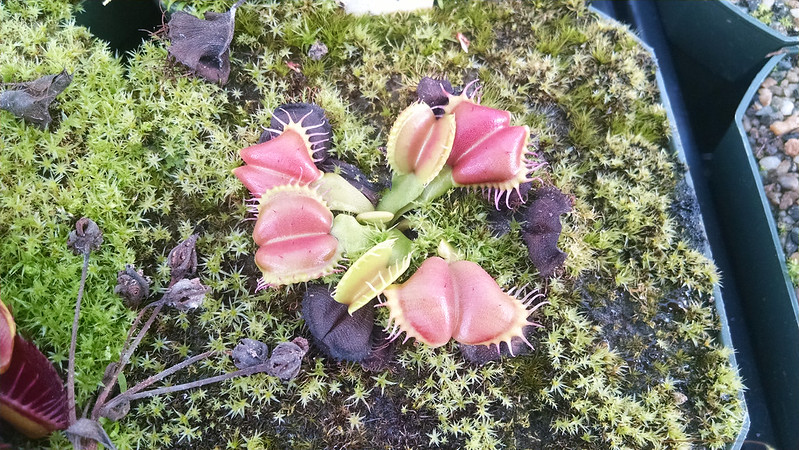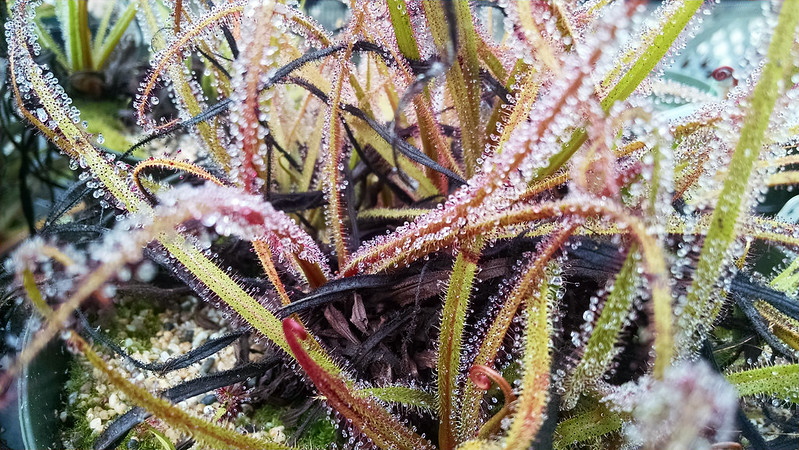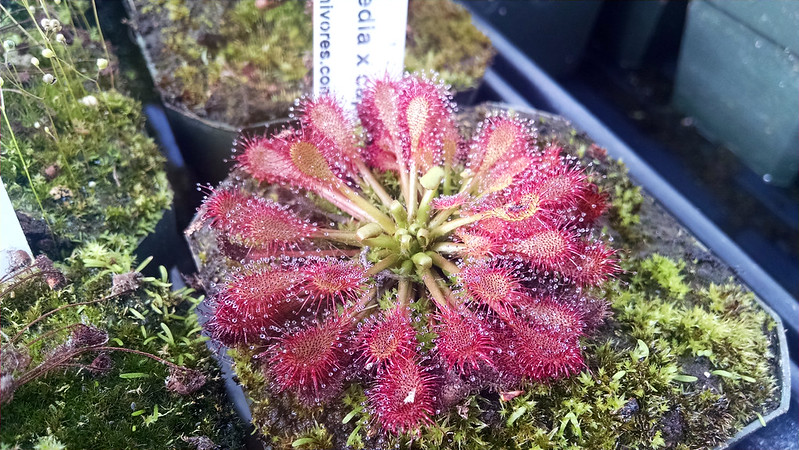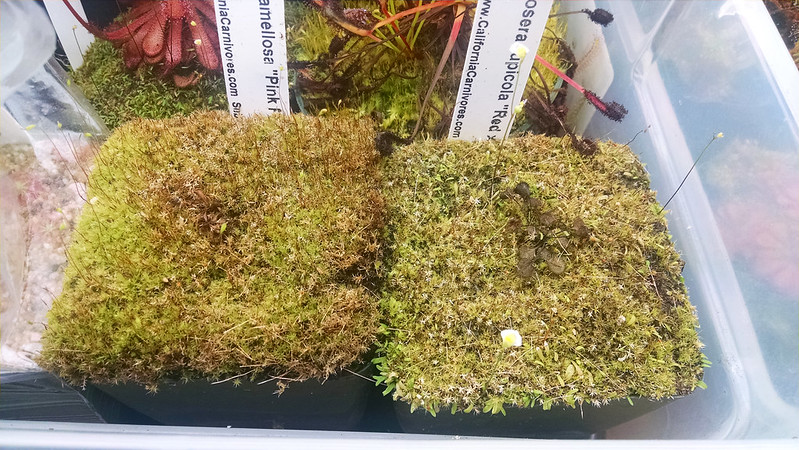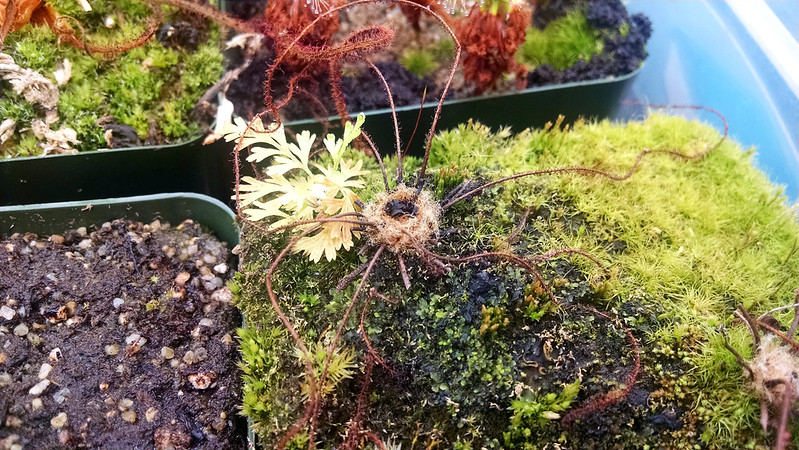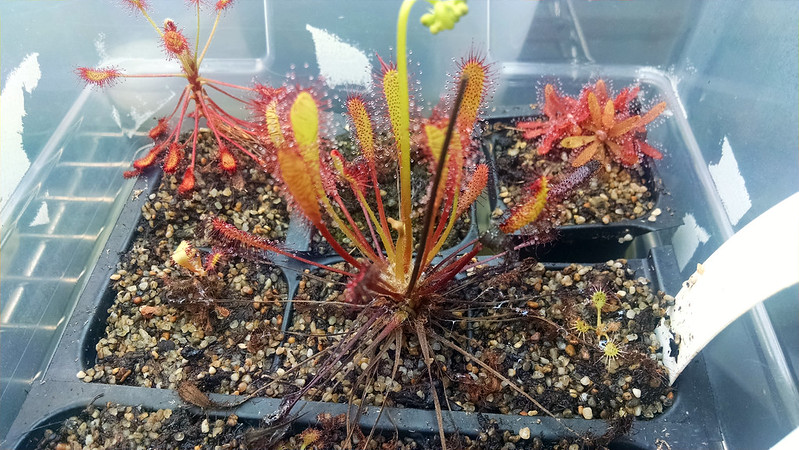There are lots of ways to organize plants. It's something that real serious botanists spend whole careers doing – determining which plants are related genetically, or by ecosystem, or what have you. Hobbyist plant collectors have their own categorization schemes, which may or may not be strictly botanically valid. The hobbyists tend to focus primarily on cultivation requirements, since providing good conditions for plants (especially weird plants like carnivores) can be expensive or difficult, so it's nice to know what groups of plants can grow in the systems you've set up.
Sundew growers are particularly blessed/cursed in that
Drosera is such a heterogeneous genus, with plants growing all over the world in all sorts of habitats (in contrast with, for example,
Sarracenia, which have relatively similar needs in cultivation).
I have my own, thoroughly unscientific, categories which guide me in developing my collection.
Temperate (
Drosera filiformis,
Drosera rotundifolia)
South American (
Drosera spiralis,
Drosera camporupestris)
Petiolaris (
Drosera ordensis,
Drosera falconeri)
Tuberous (
Drosera ramellosa,
Drosera zonaria)
Pygmy (
Drosera scorpioides,
Drosera allantostigma)
Winter-growing South African (
Drosera cistiflora,
Drosera hilaris)
"Annuals" (
Drosera burmannii,
Drosera hartmeyerorum)
Assorted warm temperate, subtropical, and tropical plants (
Drosera capensis,
Drosera binata, the Three Sisters of Queensland)
I recently acquired a plant from a group new to me, the South African winter growers. This is
Drosera cistiflora.
 |
| It started dewing up so quickly! |
I acquired this plant through the Facebook group
Carnivorous Plant Auctions and Sales. It's a great resource if you're looking to expand your collection or sell off a few of your extra plants. I've had some
D. cistiflora seeds for several months but I hadn't given germination a shot because...well, I'm not sure why. In any case, this plant has acclimated pretty quickly, and it's even coloring up under my lights a bit.
Drosera ramellosa is another winter grower (though it's a tuberous species from Australia). It's not doing quite as well.
 |
| Don't go dormant yet! Come on! |
The tips seem to be dying back, which is what it will do in summer as it goes dormant. But this is way, way too early to be dying back. It was sorta warm lately, but not
that warm. I hope I don't lose this plant. We'll see what happens.
My
Drosera rupicola (which I acquired at the same time) is doing much better.
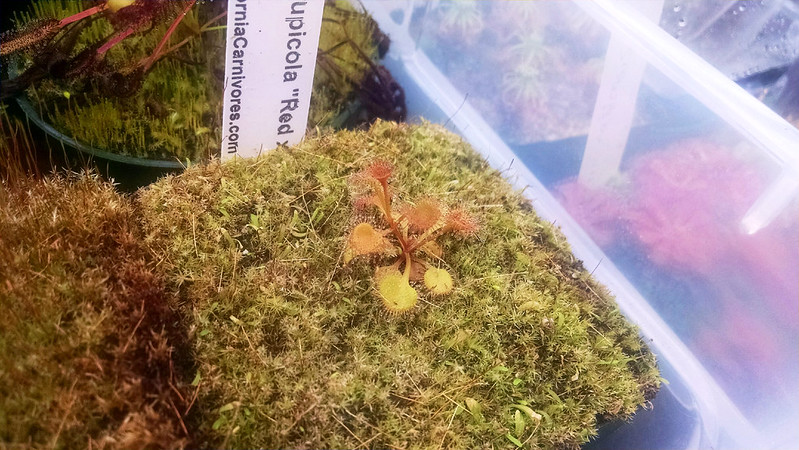 |
| I've fed this one a couple times. |
The color is pretty good, and it's definitely still growing. Hope it stays that way.
Pygmy sundews are sort of winter growers. They're summer dormant at least. I've got a stray
Drosera omissa growing in this
Drosera grievei pot.
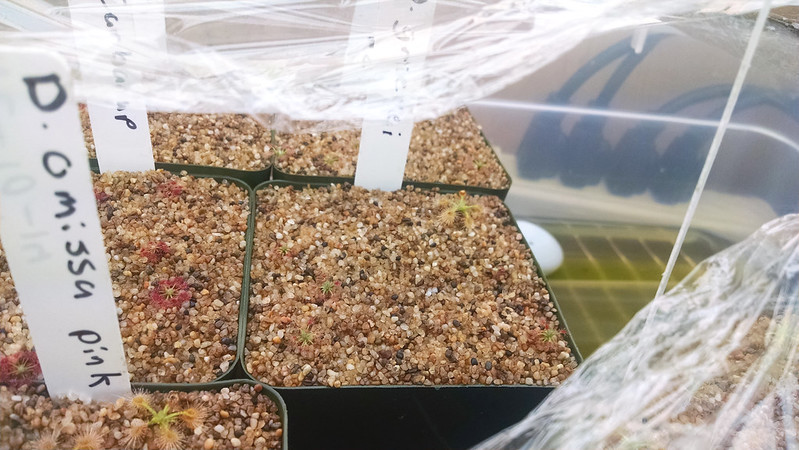 |
| D. omissa is really a beast. They've gotten really big already. |
I think some of the pygmies in the rear of this tray didn't get sprayed as well, so they have a much lower success rate. I guess I'll just have to wait to harvest some gemmae next year and then re-sow some of these pots. The lesson in this is to make sure that your pygmy pots are easily accessible when sowing on sand, since they definitely need to be kept moist.
The second round of pygmies is in a smaller tray, so hopefully they see more success as I spray them more regularly. This is
Drosera oreopodion.
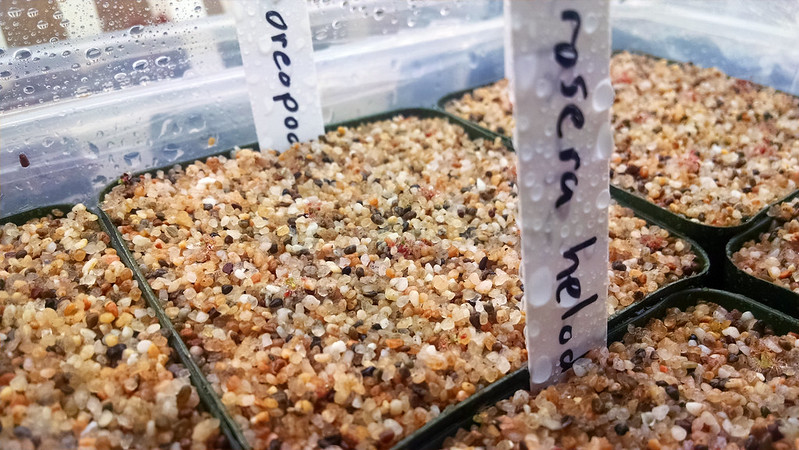 |
| They're just specks. |
Well, it's almost
D. oreopodion. It'll be
D. oreopodion soon. There aren't many pictures of this plant online, so I'm excited to see how it develops!


